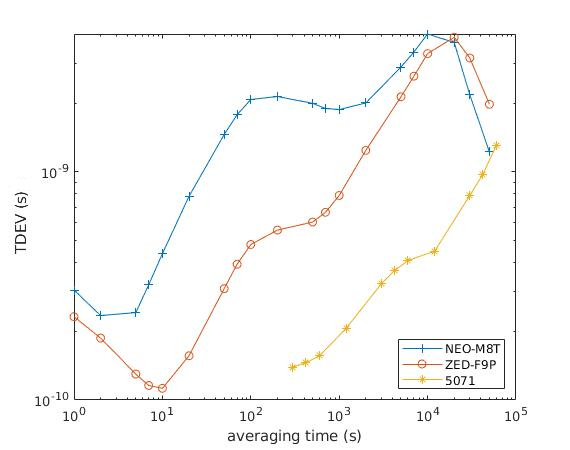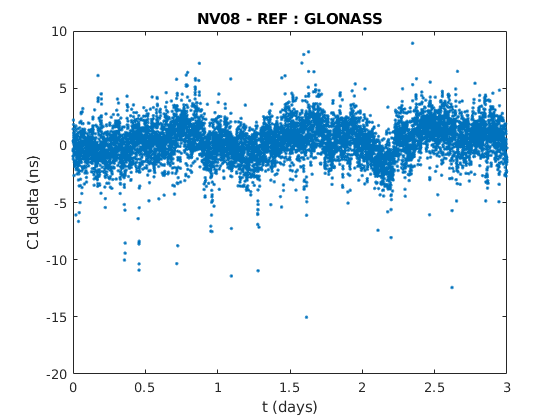Development blog
2020-02-08 Miscellaneous update
Development work of late has focused on improving support for the
ublox ZED-F9 receivers. In particular, there is a new Python logging
script and mktimetx can now decode the GPS ephemeris for
completely self-contained operation. Dual frequency output is now
supported, but still being tested. There will be a poster at EFTF 2020.
Update: EFTF 2020 was cancelled so no poster.
2019-03-25 Improved stability of the ublox ZED-F9P sawtooth
The ublox ZED-F9P sawtooth amplitude is about 5 ns, three times smaller than the ublox NEO-M8T. This results in improved stability, and improved time-transfer, at short averaging times. In the plot, the sawtooth-corrected receiver PPS has been measured against a Microsemi 5071 (standard tube). The TDEV of the 5071, measured against another 5071 and then divided by sqrt(2), is shown for comparison.
2018-09-05 GLONASS time-transfer results from the NVS NV08 GNSS receiver
We are investigating multi-GNSS time-transfer, initially using the NVS NV08 GNSS receiver's GLONASS capabilities.
The plot below shows a common clock comparison, between a Septentrio and a NVS receiver, using RINEX observations averaged at each observation time. The receivers are operating off a common antenna. The steps in the data near day boundaries are related to the NVS receiver's estimate of the UTC-GPS difference, which is needed to calculate UTC-GLONASS.


